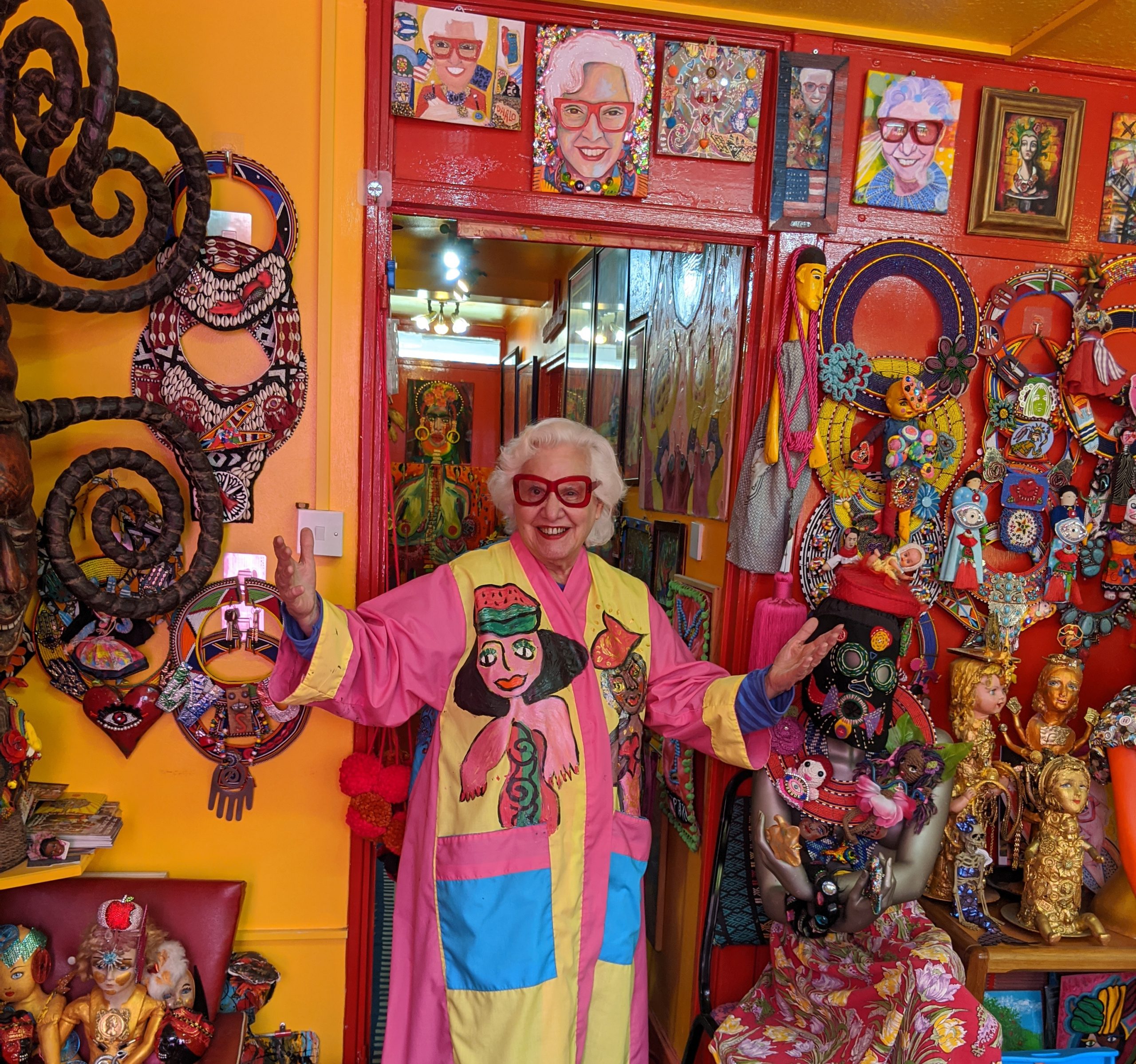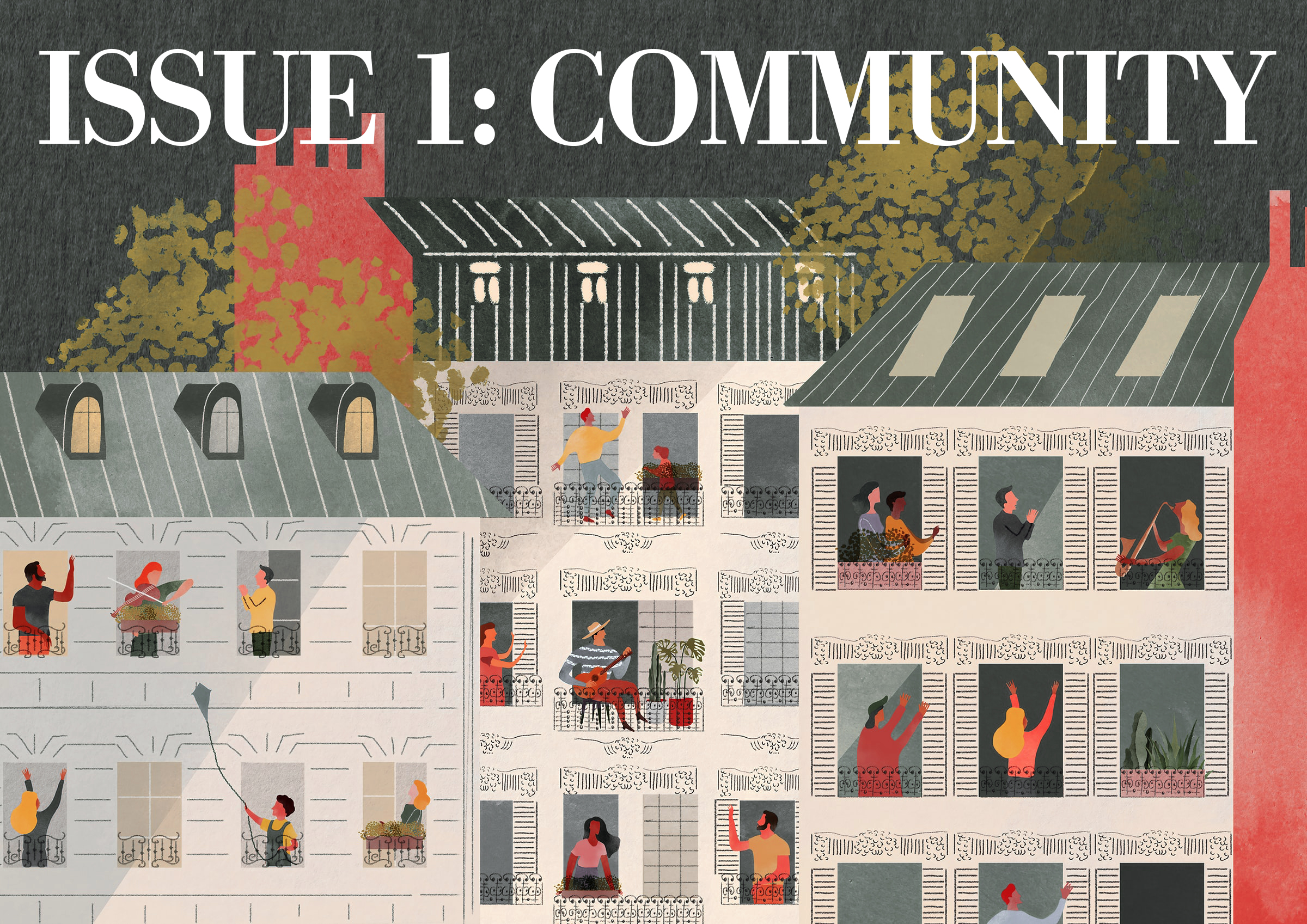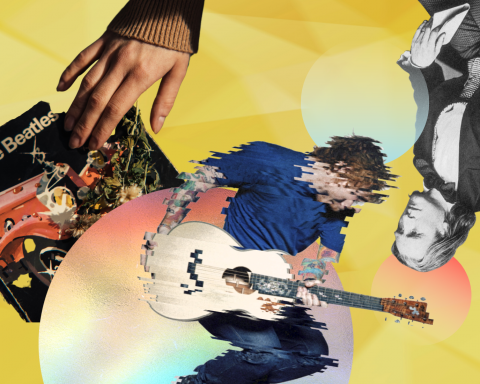Marie Kondo, an organising consultant and TV personality, is famous for her belief that tidying up can change your life for the better. Her philosophy focuses on looking at whether the objects you own “spark joy”, and if they don’t you must get rid of them. The idea is, that through decluttering your living space, you declutter your mind of the ties to the past, and make way for the future. In her book, The Life-Changing Magic of Tidying, Kondo argues that we ought to only keep the things that speak to our heart and discard the rest without further deliberation, but what if absolutely everything we own speaks to our heart? What if every object we own is full of meaning, value, and joy?
Minimalism vs Maximalism
Most people are familiar with minimalism, whether it’s thanks to the movement’s proponents such as Marie Kondo, or simply because they find it aesthetically pleasing. Not as many people are familiar with minimalism’s polar opposite, maximalism. But what exactly is maximalism? To put simply, it is the aesthetic of excess. It is finding beauty and comfort in environments full of stuff. Clashing patterns, vibrant colours, lots and lots of art and trinkets. More is always more in maximalism.
This month, we spoke to someone who believes that surrounding yourself with all the things you love and forgetting about decluttering is not only the key to happiness, but also a way to be more environmentally conscious. Let us introduce Sue Kreitzman – artist, author, and aficionado of colours.

Before Sue became an artist, she worked as a successful food-writer and TV chef. In the late nineties, she started experimenting with art and never stopped. Since then, she has been adorning her home with the vibrantly coloured art she makes. In this interview, we asked Sue about her artistic methods and the relationship between her environment(s) and happiness.
One of your most memorable quotes is ‘Don’t wear beige – it might kill you.’ Does this also apply to the environment you live in?
Indeed it does. I do not understand ‘neutral’ environments; I certainly do not understand minimalism. Blandness is frightening. Put me into a beige room, or make me wear bland unadorned clothing, and I become a brain fogged ancient crone. Colour gives life, keeps passions alive, restores a sense of youth and vigour.
And minimalism? Our collections are the glue that holds our lives together, narrators of our passage through the world, the totems that define and protect us. Marie Kondo, get thee behind me.
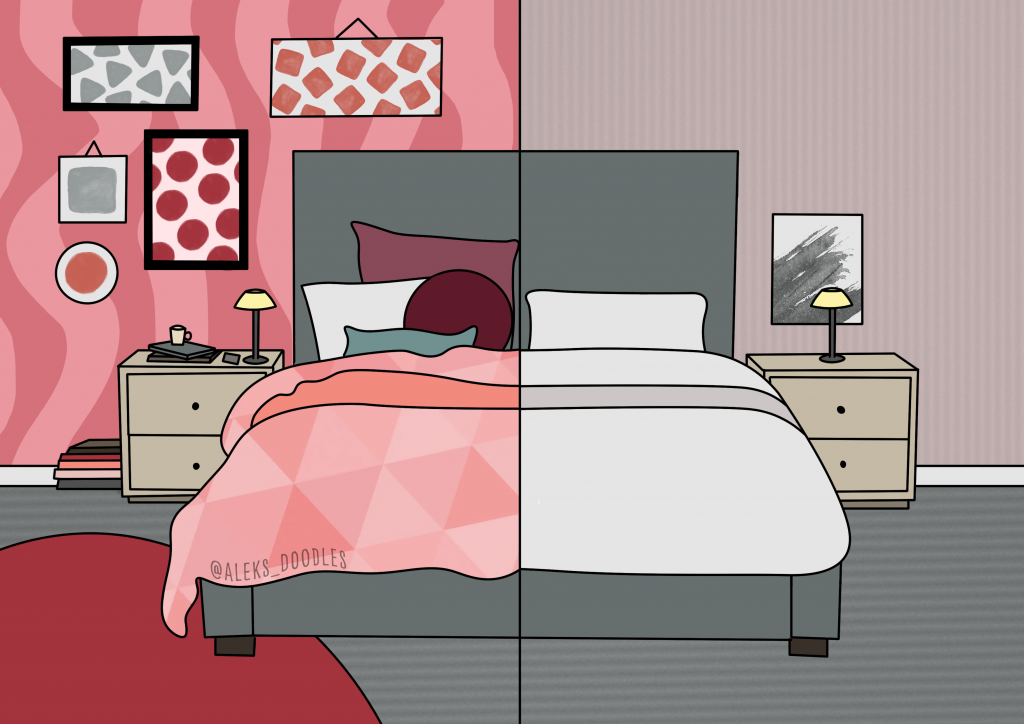
You are famous for your assemblage art, which you create by repurposing things you’ve referred to as ‘junk’ in many interviews. It strikes me as an environmentally-friendly way to approach art. Was environmental sustainability in your art a conscious choice?
I am an obsessive collector, and have been since childhood. Pavement treasure, car boot finds, little bits of this and that, broken jewellery, old toys, charity shop and car boot discoveries, flea market stuff! I am fascinated by the detritus of years past. Mining the past, repurposing discarded things into new and exciting works of art and apparel seems to me a noble way of living. Over the years, I became aware of the environmental impact of what I was doing. Nowadays, assemblage art and collage have become quite a thing. I think I was a pioneer!
There is a growing body of research which supports the link between art and psychological wellbeing. Do you personally feel that surrounding yourself with art improves your wellbeing?
Art keeps me sane, gets me out of bed in the morning, and allows me to live my life without spiralling into depression. Making art, and living with art is the most powerful form of self medication there is. If you think you have no talent for drawing, painting and sculpting, you are fooling yourself. Go to that place where you were a child, drawing your mum, your house, your dog…start there. You will be amazed where it takes you. Is it good, is it bad? What does that even mean? No one is judging you. Art is life changing. We all need psychological buffers against the madness of the word, this year or any year. Art is always the answer.
In your quarantine video, you said you loved being locked up in paradise and you kept busy by making art. Would you have been able to stay positive and productive if you had to isolate in a different environment?
I am lucky enough to live in what I term an ‘Art House’. My flat overflows with art created by me and by my beloved friends; colour leaps from all walls, nooks and crannies; and my backyard shed is crammed with art supplies including the juiciest, most fascinating junk imaginable.
The quarantine enabled me to make stuff at all hours of the day and night. Dozens of drawing and neck shrines; embellished shoes and painted clothing; my stash of paper bags turned into masks; and lush portraits of imaginary Goddesses. Groceries were left at my front door, and all social life was conducted on Social Media. Most of my friends are artists, so our messages to each other consisted of ‘Look what I made today!’ A magnificently cloistered way of artistic life. Pure bliss. Would this have been possible in another environment? Highly unlikely.
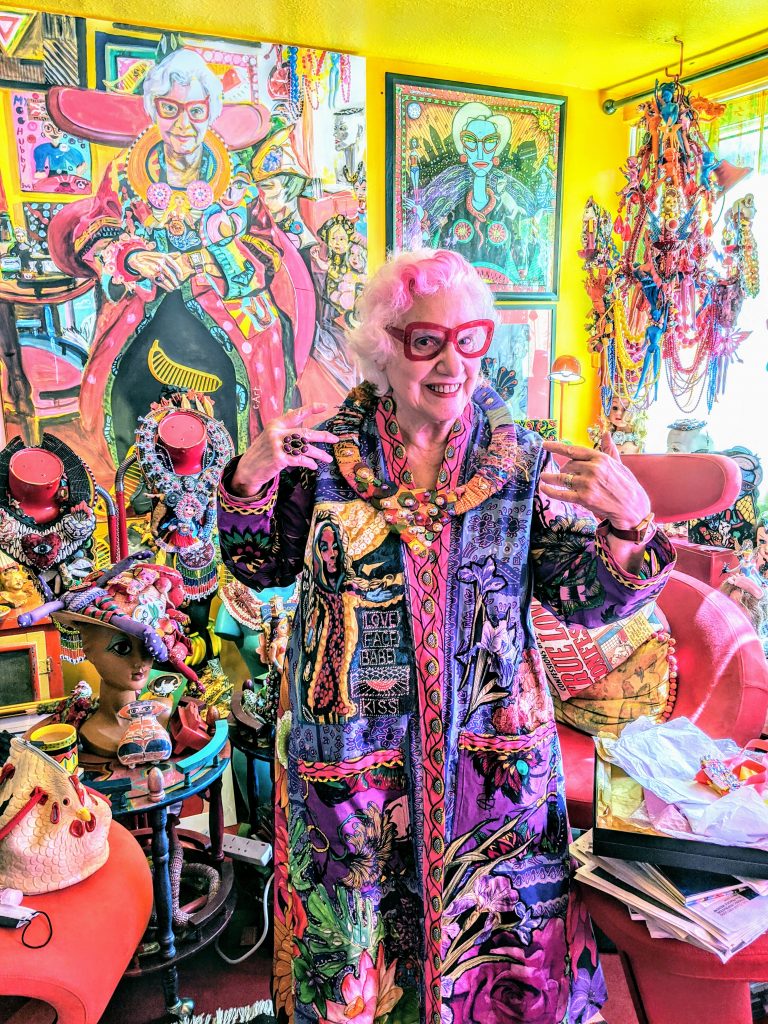
“Our collections are the glue that holds our lives together, narrators of our passage through the world, the totems that define and protect us. Marie Kondo, get thee behind me.“
What about your clothes? In a way, clothing is a ‘wearable environment’ that we take wherever we go. What is your perfect ‘wearable environment’?
I am surrounded by colour and art. The art is deeply personal, and – in many ways – quite spiritual. The colour is necessary to my well being and mental health. When I exit my flat, I can’t bear to leave any of it behind, so I wrap myself in it. I emerge into the outside world a collage, a walking work of art, a perambulating gallery. All my outfits are perfect wearable art environments. As a freelance artist of a certain age, I don’t have a 9 – 5 job, I don’t work in an office or a bank, I can do whatever I please. And I please to wear art all the time.
I remember reading somewhere that you encourage people to buy second-hand or directly from the designers. What is your clothes-shopping process? Do you ever buy (or have you ever bought) clothing from fast-fashion brands?
I never buy fashion brands, fast or otherwise. I source my fabrics from African traders, flea market sellers, local markets, vintage things found in charity shops. I design the garments myself, and a tailor in my neighbourhood stitches them up for me.
I support artists, artisans, small businesses, market traders and local businesses. I commission lots of jewellery and clothing from artist friends. I haunt my favourite flea markets. I want every cent I spend on clothing and adornment to make a difference. I want to look fantastic, and I want everything I wear to have meaning.
The one exception is my feet. I wear crocs. I’ve worn them since they were first invented. In every colour! I (and my friends) embellish them. They get painted, or encrusted with doodads and collectables. From top to toe, I am a sight to behold.
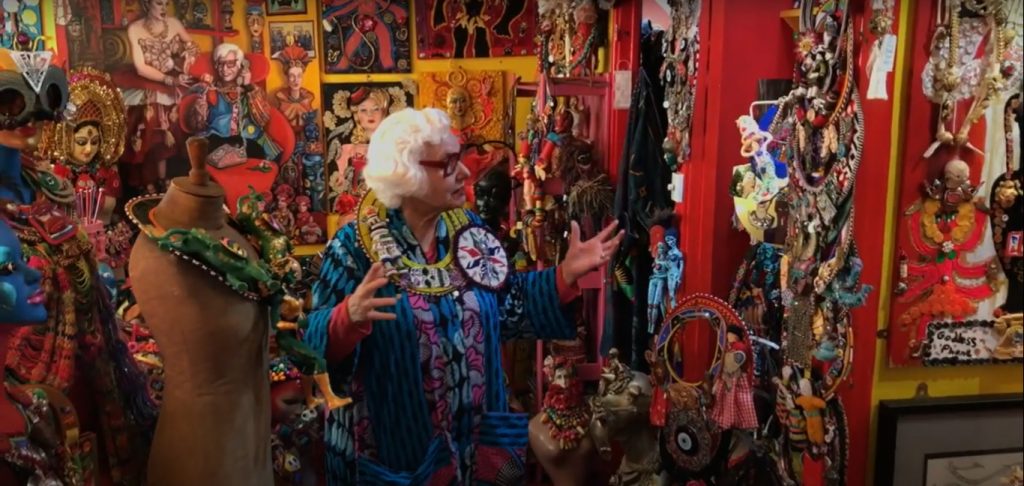
As you can see, Marie Kondo’s philosophy doesn’t work for everyone. For some, decluttering does not lead to joy. It leads to cold and empty spaces without any identity.
Maximalism teaches us to surround ourselves with the things we love, no matter the quantity. It teaches us that minimalism is overrated, and that it is okay to enjoy cluttered environments. Above all, it teaches us that we shouldn’t feel ashamed of the way we like to live and exist within our environments. Sometimes more is exactly what we need.
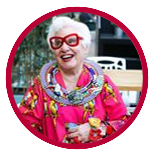
Sue Kreitzman
www.suekreitzman.com
Instagram: @suekreitzman
Facebook: @sue.kreitzman
Check out Sue’s flat tour on her YouTube channel!

